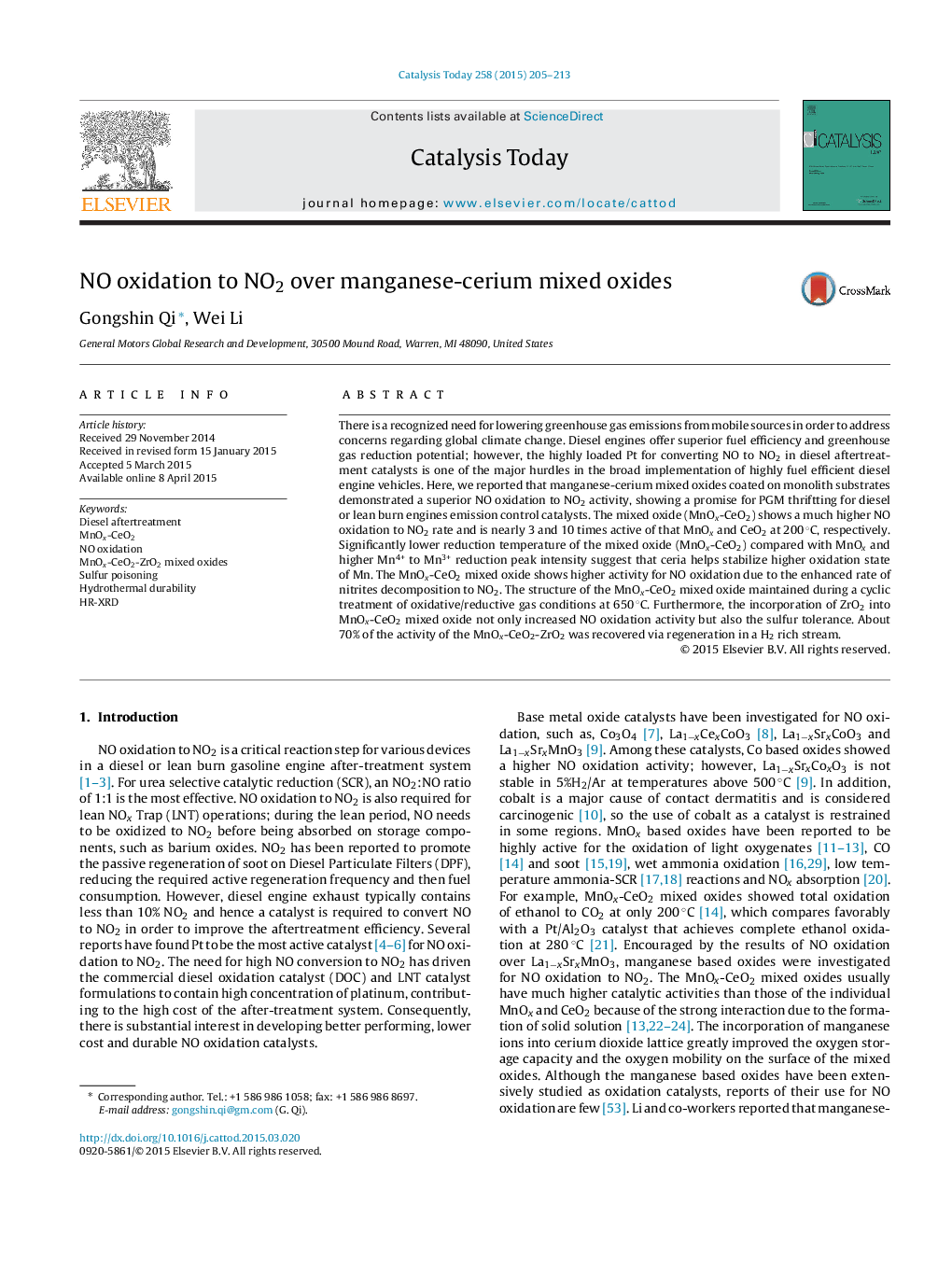| Article ID | Journal | Published Year | Pages | File Type |
|---|---|---|---|---|
| 53906 | Catalysis Today | 2015 | 9 Pages |
•MnOx-CeO2 mixed oxide shows high NO conversion to NO2.•Structure of the mixed oxide is maintained during lean/rich treatment at 650 °C.•Incorporation of ZrO2 into the mixed oxide increases its sulfur tolerance.
There is a recognized need for lowering greenhouse gas emissions from mobile sources in order to address concerns regarding global climate change. Diesel engines offer superior fuel efficiency and greenhouse gas reduction potential; however, the highly loaded Pt for converting NO to NO2 in diesel aftertreatment catalysts is one of the major hurdles in the broad implementation of highly fuel efficient diesel engine vehicles. Here, we reported that manganese-cerium mixed oxides coated on monolith substrates demonstrated a superior NO oxidation to NO2 activity, showing a promise for PGM thriftting for diesel or lean burn engines emission control catalysts. The mixed oxide (MnOx-CeO2) shows a much higher NO oxidation to NO2 rate and is nearly 3 and 10 times active of that MnOx and CeO2 at 200 °C, respectively. Significantly lower reduction temperature of the mixed oxide (MnOx-CeO2) compared with MnOx and higher Mn4+ to Mn3+ reduction peak intensity suggest that ceria helps stabilize higher oxidation state of Mn. The MnOx-CeO2 mixed oxide shows higher activity for NO oxidation due to the enhanced rate of nitrites decomposition to NO2. The structure of the MnOx-CeO2 mixed oxide maintained during a cyclic treatment of oxidative/reductive gas conditions at 650 °C. Furthermore, the incorporation of ZrO2 into MnOx-CeO2 mixed oxide not only increased NO oxidation activity but also the sulfur tolerance. About 70% of the activity of the MnOx-CeO2-ZrO2 was recovered via regeneration in a H2 rich stream.
Graphical abstractFigure optionsDownload full-size imageDownload high-quality image (142 K)Download as PowerPoint slide
